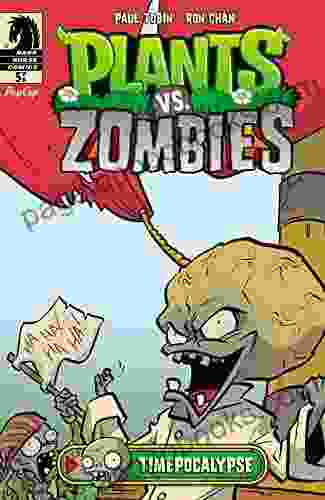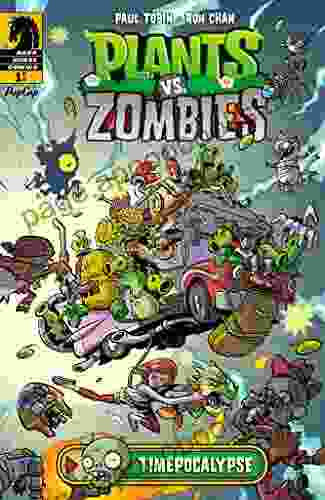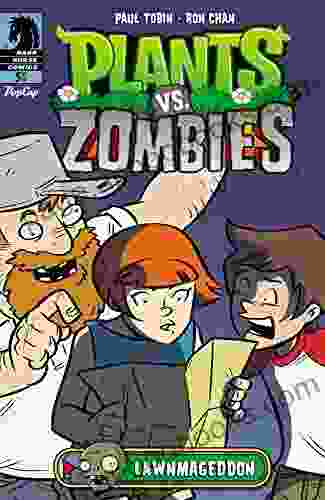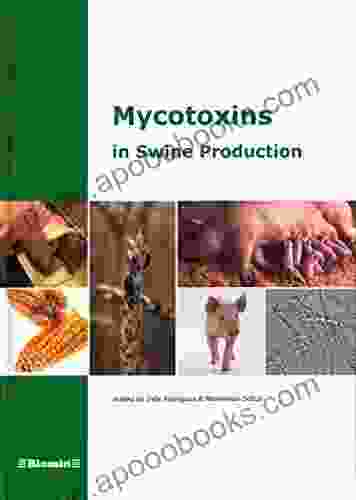Mycotoxins in Aquaculture: A Comprehensive Guide for Preventing Contamination and Ensuring Seafood Safety

Mycotoxins, toxic secondary metabolites produced by fungi, pose a significant threat to aquaculture, jeopardizing seafood safety and the livelihoods of aquaculture farmers. This article delves into the world of mycotoxins in aquaculture, providing a comprehensive overview of their sources, detrimental effects, and effective prevention measures.
4.8 out of 5
| Language | : | English |
| File size | : | 2339 KB |
| Text-to-Speech | : | Enabled |
| Screen Reader | : | Supported |
| Enhanced typesetting | : | Enabled |
| Print length | : | 180 pages |
| Lending | : | Enabled |
Sources of Mycotoxins in Aquaculture
Mycotoxins can enter aquaculture systems through various pathways:
- Feed ingredients: Grains, oilseeds, and other feed ingredients may be contaminated with mycotoxins during harvesting, storage, or transportation.
- Natural water sources: Fungi growing on decaying organic matter in lakes, rivers, or coastal areas can release mycotoxins into the water.
- Equipment contamination: Fungal spores can colonize and produce mycotoxins on equipment used in aquaculture, such as tanks, filters, and feeding systems.
Effects of Mycotoxins on Aquatic Organisms
Mycotoxins exert a wide range of toxic effects on aquatic organisms, including:
- Hepatotoxicity: Mycotoxins can damage the liver, leading to reduced growth, impaired appetite, and increased susceptibility to disease.
- Immunosuppression: Mycotoxins suppress the immune system, making aquatic organisms more vulnerable to infections.
- Carcinogenesis: Some mycotoxins, such as aflatoxin B1, have been linked to the development of cancer in fish.
- Reproductive impairments: Mycotoxins can affect reproductive success, reducing fertility and inducing abnormalities in offspring.
Mycotoxin Prevention in Aquaculture
Preventing mycotoxin contamination in aquaculture is crucial to safeguard seafood safety and ensure the sustainability of the industry. Key preventive measures include:
- Feed quality control: Implementing rigorous quality control procedures to prevent the use of mycotoxin-contaminated feed ingredients.
- Water management: Controlling water sources and implementing filtration systems to remove mycotoxin-producing fungi.
- Equipment sanitation: Regular cleaning and disinfection of equipment to eliminate fungal growth and minimize contamination risk.
- Monitoring and surveillance: Regularly testing feed and water for mycotoxins to detect and mitigate potential contamination.
- Mycotoxin binders: Incorporating mycotoxin binders into feed to bind and neutralize mycotoxins, preventing their absorption by aquatic organisms.
Sherryl Woods' "Mycotoxins in Aquaculture"
Sherryl Woods' "Mycotoxins in Aquaculture" is an authoritative and comprehensive reference guide for professionals and researchers involved in aquaculture. This book provides:
- An in-depth understanding of the sources, effects, and prevention of mycotoxins in aquaculture.
- Practical guidelines for implementing mycotoxin monitoring and prevention measures.
- Case studies and real-world examples of mycotoxin contamination and mitigation in aquaculture.
- Cutting-edge research findings on emerging mycotoxins and innovative control strategies.
Mycotoxins pose a significant threat to aquaculture, requiring vigilant monitoring and effective prevention measures. By understanding the sources and effects of mycotoxins, implementing rigorous feed quality control, managing water sources, sanitizing equipment, and monitoring mycotoxin levels, aquaculture farmers can minimize contamination risks and ensure the safety and sustainability of their operations. Sherryl Woods' "Mycotoxins in Aquaculture" is an invaluable resource for professionals seeking to protect their aquaculture ventures and safeguard the well-being of both aquatic organisms and seafood consumers.
4.8 out of 5
| Language | : | English |
| File size | : | 2339 KB |
| Text-to-Speech | : | Enabled |
| Screen Reader | : | Supported |
| Enhanced typesetting | : | Enabled |
| Print length | : | 180 pages |
| Lending | : | Enabled |
Do you want to contribute by writing guest posts on this blog?
Please contact us and send us a resume of previous articles that you have written.
 Book
Book Novel
Novel Page
Page Chapter
Chapter Text
Text Story
Story Genre
Genre Reader
Reader Library
Library Paperback
Paperback E-book
E-book Magazine
Magazine Newspaper
Newspaper Paragraph
Paragraph Sentence
Sentence Bookmark
Bookmark Shelf
Shelf Glossary
Glossary Bibliography
Bibliography Foreword
Foreword Preface
Preface Synopsis
Synopsis Annotation
Annotation Footnote
Footnote Manuscript
Manuscript Scroll
Scroll Codex
Codex Tome
Tome Bestseller
Bestseller Classics
Classics Library card
Library card Narrative
Narrative Biography
Biography Autobiography
Autobiography Memoir
Memoir Reference
Reference Encyclopedia
Encyclopedia Tara Westover
Tara Westover Sue Julsen
Sue Julsen Max Weber
Max Weber Tom Shelby
Tom Shelby Michael Chabon
Michael Chabon Todd Rice
Todd Rice Steven J Brams
Steven J Brams Judith Thompson
Judith Thompson Natalie Goldberg
Natalie Goldberg Matthew B Robinson
Matthew B Robinson Nassim Odin
Nassim Odin Richard K Lieberman
Richard K Lieberman Tabitha Forney
Tabitha Forney Thomas Alter
Thomas Alter Sue Grafton
Sue Grafton Neven Iliev
Neven Iliev Nancy Mitford
Nancy Mitford Robert Pasick
Robert Pasick Stephanie J Shaw
Stephanie J Shaw Michael Aaron
Michael Aaron
Light bulbAdvertise smarter! Our strategic ad space ensures maximum exposure. Reserve your spot today!

 Samuel Taylor ColeridgeUnlock Your Musical Potential with Michael Aaron's Comprehensive Piano Course
Samuel Taylor ColeridgeUnlock Your Musical Potential with Michael Aaron's Comprehensive Piano Course Tom HayesFollow ·15.7k
Tom HayesFollow ·15.7k Wade CoxFollow ·3.9k
Wade CoxFollow ·3.9k Oscar WildeFollow ·11.6k
Oscar WildeFollow ·11.6k Herbert CoxFollow ·19.8k
Herbert CoxFollow ·19.8k Ethan GrayFollow ·4.1k
Ethan GrayFollow ·4.1k Jeremy CookFollow ·9.2k
Jeremy CookFollow ·9.2k Marvin HayesFollow ·2.9k
Marvin HayesFollow ·2.9k Easton PowellFollow ·16.8k
Easton PowellFollow ·16.8k

 Ben Hayes
Ben HayesJourney into the Verdant Realm of "Plants vs. Zombies:...
Immerse Yourself in an Epic Battle for...

 Edward Reed
Edward ReedUnveiling the Allure of Modish Crochet Hats Annie...
In the realm of fashion and...

 Jaylen Mitchell
Jaylen MitchellHalf Moon Bay: An Unforgettable Adventure Awaits in Aj...
Prepare yourself...

 Dan Brown
Dan BrownUnleash the Plant-Powered Apocalypse: Dive into Paul...
Prepare yourself for an epic showdown where...

 Efrain Powell
Efrain PowellStolen Summer: Nora Sommer's Enthralling Caribbean...
Escape to a World of...

 Steven Hayes
Steven HayesPlants vs. Zombies: Lawnmageddon - The Ultimate Battle...
Prepare for the ultimate battle between plants...
4.8 out of 5
| Language | : | English |
| File size | : | 2339 KB |
| Text-to-Speech | : | Enabled |
| Screen Reader | : | Supported |
| Enhanced typesetting | : | Enabled |
| Print length | : | 180 pages |
| Lending | : | Enabled |










